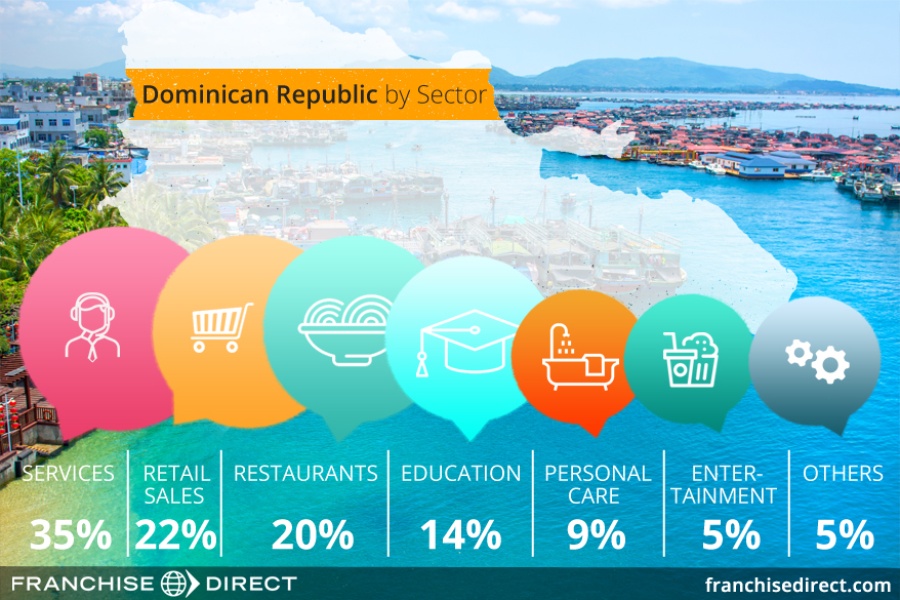
International Franchise Growth Destinations
Presently, the international unit count for Taco Bell (#13) is in the 400s, but it wants to have at least 1,000 international units by 2022—and its betting on Brazil and Spain to lead the way.
Over the summer, the fast food franchise signed the first master franchise agreements in Taco Bell history. The two master franchisees are Sforza Holding Group in São Paulo and Casual Brands Group (CBG) in Madrid. Taco Bell expects the deals to result in the opening of over 400 new restaurants in the markets Sforza and CBG cover over the next decade.
“We have found two strong partners in both Sforza and CBG, and I am confident they will take our California-inspired brand to new heights in the coming decade,” Liz Williams, president of Taco Bell International, said in a release. Elsewhere, Taco Bell opened its first location in Thailand in January. One of the menu adaptations the fast food franchise had to adopt for customers is local beer.
As noted in the overview section, Brazil is also proving to be a boom site for Burger King (#2), which on its current pace will cross over the 1000 franchise mark in Brazil sometime this year.
A recent economic crisis might be contributing to a new found Brazilian infatuation with fast food. In a January 2019 Bloomberg article, Leticia Menegon, a business professor at ESPM-SP, the Superior School of Advertising and Marketing in Brazil, remarked that “fast-food chains were the only ones that didn’t suffer,” during the country’s recession. She also noted a shift in eating habits with hamburgers becoming increasingly popular among Brazilians from all classes.
Subway (#8) is also increasing its focus on growth outside the United States. VP of Development James Walker discussed the franchise’s plans for global growth in May, where he said the top international markets where Subway will focus first are China, Saudi Arabia, India, Korea, and certain European markets such as Germany.
“There’s a lot of pent-up demand for the brand right now in certain markets,” Walker told Nation’s Restaurant News. “I wouldn’t say that we’re necessarily focused on opening in more countries. I would say right now we are trying to address the consumer demand that already exists in markets that we’re not servicing in the level that we want. Right now, we’ve got a lot of markets like China, for example, where we have so much demand and love for the brand that we can grow there exponentially for many, many years to come.”
Growing in China has also been at the top of the expansion to-do list for #12 InterContinental Hotels Group (IHG), which has added 100 new hotels in China in the last 12 months. Keith Barr, IHG’s CEO, told CNBC in January at the World Economic Forum that “Twenty years ago, international hotel companies were dependent on inbound travelers. Now we are basically a Chinese business with local travelers across all the segments.”
IHG is now focused on expansion in southern Asia, Mexico, as well as Germany.
Also, mounting a charge into China is Tim Hortons (#33). In July, coffee franchise announced an agreement with Cartesian Capital to open over 1,500 locations in China over the next decade. The first of these locations is scheduled to open in 2019.
As is the case for all franchises when expanding into other countries, adapting to the local taste will be the key for success. “A lot of (Asian) coffee shops will sell a piece of cake or whatever, but they don’t have a kitchen like we do, so that is where we are spending most of our time, trying to figure out what to serve for breakfast and lunch,” says Tim Hortons President Alex Macedo. Macedo also notes that the franchise will also need to find a balance between the pace of Chinese coffeehouses, which tends to be more “get in and get out”, versus the typical pace of a Tim Hortons coffeehouse, which is more encouraging of spending time in the restaurant.
Within the past year, Tim Hortons has expressed expansion plans for Spain, Mexico, Great Britain and the Philippines.
Arby’s (#29) is also eyeing Asia for growth. The fast food franchise signed a development deal with S. Fresh Co. for 100 new locations in South Korea. This deal follows one that aims to open 50 locations in Egypt.
While the franchises listed above are already large systems, smaller franchise systems shouldn’t be afraid of going international.
According to Ed Teixeira of Franchise Grade, “Just because a franchisor operates a small or emerging franchise network, it shouldn’t exclude them from exporting their franchise brand to other countries, providing they meet certain basic requirements.”

When considering if going overseas is for them, franchisors should be honest about the qualities their franchises possess, but size shouldn’t be a major deciding factor. As Teixeira plainly states, “there are large franchisors that based upon their performance and product are unqualified for international expansion.”
So what are the qualities franchises—small or large—should have when deciding whether or not to make the international jump? Here are Teixeira’s key factors for franchisors:
- The franchise has a successful operation in the U.S.
- Leadership is engaged and committed to international expansion.
- There is strong potential for expansion in other countries.
- The franchise has suitable financial resources for an international project.
- The franchisor has familiarity with target countries or will invest in the resources to acquire it.
- Staff is available and capable of training, servicing and supporting a franchisee in another country.
- The franchisor can provide operational and marketing know-how to others.
- Operations and marketing manuals are current and up to date and can be adapted and translated for use in other countries.
Protecting Intellectual Property
Back in 2015, we posted the “The Curious Case of Iranian Fast Food ‘Franchises’” telling the story of local entrepreneurs that designed their businesses to closely resemble popular fast food franchises like McDonald’s, Pizza Hut, Burger King, Subway, Carl’s Jr., Hardee’s and others. They were doing so because of a very complicated situation involving a public’s rising affinity for American-style fast foods amidst a backdrop of long-standing hostility between the American and Iranian governments.
But while “imitation is the sincerest form of flattery,” the practice highlighted a very serious issue for franchisors: how do they protect their intellectual property in other countries.
Intellectual property, or IP, consists of original creations such as inventions; literary and artistic works; designs; and symbols, names and images that can be used commercially. IP laws typically take the form of patent, copyright, and trademark rights. These rights allow their holders to earn money from their creation(s).
However, while organizations like the World Intellectual Property Organization (WIPO)—established in 1967—have been around for decades, IP case law is still in its early stages and is lagging behind practical use in many instances. The vagueness surrounding IP protection can lead to a franchisor’s trademarks being knocked off or copied without recourse. Thus, franchisors must be vigilant in protecting their IP.
According to franchise law experts Joyce Mazero and Michael Seid, a large concern with international IP is similar to cybersquatting domain names on the internet. “Because trademark laws in some countries grant trademark rights to the first party to file for trademark protection, trademark pirates may have already registered your brand name under your nose, hoping you will pay them to get it released to you.”
To protect their IP, Mazero and Seid suggest franchisors consult with attorney knowledgeable with the country they seek to enter in order to evaluate the timing and cost of registration. They also caution against allowing a master franchisee or area developer to register patents, copyrights or trademarks as that may lead to the master franchisee or area developer owning the IP for that area, not the franchisor.
Franchise Market Spotlight: The Dominican Republic
A strong pro-American sentiment and an already established base of franchises in the country makes the Dominican Republic, which shares the island of Hispaniola with Haiti, an attractive emerging market destination for American franchisors.
Over the past several years, franchising in the country has matured following the passing of legislation such as CAFTA-DR in 2007. (CAFTA-DR is the free trade agreement between the Dominican Republic and U.S.) Export.gov estimates franchises have created over 75,000 jobs among over 7,800 units.
The foundation of the franchising industry in the Dominican Republic largely took shape in the 1980s. However, it was largely confined to the food industry until the mid-1990s when more industry segments gained traction. Nowadays, service franchises make up the largest percentage of franchises in the Dominican Republic with retail a close second.
Franchises in the Dominican market currently have the following industry segment breakdown:

Most of the franchise locations in the country are concentrated in the capital city of Santo Domingo—as much as 44% of the current total number by some estimations. Coastal resort areas make up a bulk of the remaining franchise locations.
As you could probably guess, franchises that originate in the U.S. (45%) and locally (40%) make up a majority of the Dominican franchise market. Other franchises come from Spain, Venezuela, Canada, along with other South American and European countries.
The potential of the popular tourist destination hasn’t gone unnoticed with international franchise developers. Some popular franchises already operating in the Dominican Republic include: McDonald’s (#1), Burger King (#2), Pizza Hut (#3), KFC (#5), Domino’s (#9), Century 21 (#27), Krispy Kreme (#38), Coldwell Banker (#40), Papa John’s (#57), Johnny Rockets (#59), Chili’s (#97), Denny’s, Gold’s Gym, Planet Fitness, and more.














